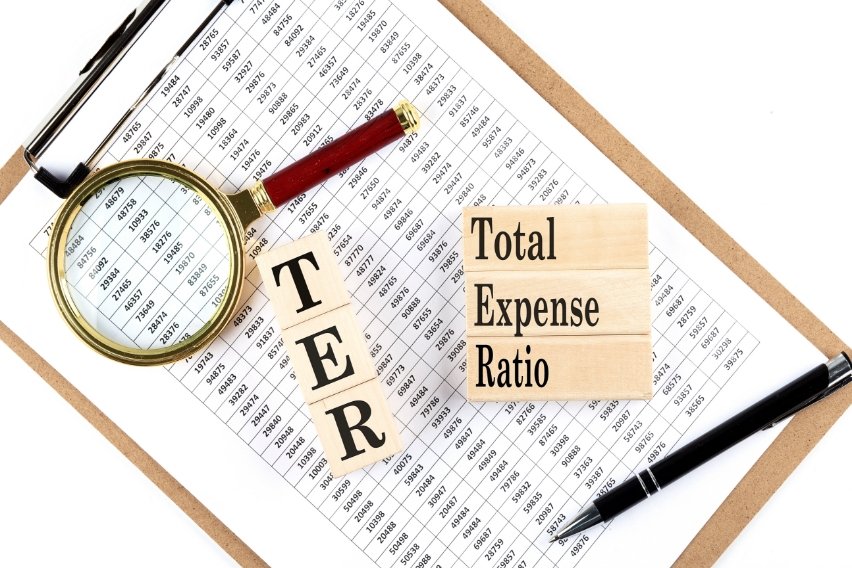What Is Capital in Accounting? Importance, Types, & Examples

Capital is crucial in business. Many companies have various capital structures, including working, trading and equity capital. Without this capital, a business would struggle to carry out its day-to-day operations. As the business grows, it requires more capital. This can come in several forms, including more money or the purchase of more assets.
Companies need to manage how they invest in their capital carefully if they hope to achieve a return on investment. So, what is capital? And how does it apply in the world of accounting? This article answers those questions and more as we take a deep dive into the complexities of capital.
Table of Contents
What Is Capital in Accounting?
What Is Capital in Accounting?
The term “capital” can refer to several elements of a business. The most obvious is the financial assets the company holds. In other words, the funds it has access to. These financial assets are commonly used to help the company deal with expenditures. Equipment purchases, wages, and deals with vendors may all come out of this type of capital.
In a broader sense, capital also refers to a company’s capital assets. Beyond money, capital assets can refer to a company’s manufacturing equipment and physical facilities. It may also allude to assets held to generate capital, such as real estate and inventory.
In the accounting sense, capital typically relates to cash flow. As such, we can view it as a measurement of a company’s wealth, in addition to a vehicle used to increase that wealth. Companies create capital structures to help them protect their capital and generate more.

Why Is Capital Important?
Capital plays numerous vital roles in the successful running of a business. Production is the most obvious. Without capital, a company can’t produce the product it sells. This capital may take the form of the money the company spends on inventory. It can also refer to the tools and equipment the company uses to make its products.
Access to capital is also vital for improving employee productivity. Setting aside more capital for employees to leverage allows a company to satisfy market demand. In doing so, employees produce more and the economy as a whole receives a boost.
Capital is key to economic development. More specifically, the accumulation of capital leads to the success of entire countries.
Finally, access to capital creates employment opportunities. This benefits the wider economy. Furthermore, people who receive employment create capital goods that boost their company.
So, capital is important because it’s linked to the success of companies and the economies they are a part of.
How Is Capital Used?
A company uses capital to pay for the production of its goods and services. This is where the return-on-investment aspect comes in. The capital spent to create goods and services is profit. That profit equates to more capital, which a business can invest into equipment and production. Investment leads to higher production levels, generating more profit and so on.
This example gives us a small view of how companies aim to use capital – to create value.
A business may choose to allocate its capital to labour and building expansions. It may also invest capital into assets like tools and machinery. The goal is always to invest capital so you receive a higher return than the cost of your capital.
As you can imagine, investing capital gets complicated for large companies. To counter this complexity, businesses set up capital structures designed to help them invest wisely. They use these structures to assess their capital needs and thresholds. The information related to both gets reflected on the company’s balance sheets.
Types of Capital
Businesses use capital to fund the company, be that through a launch or growth period. Access to capital is limited, with most companies having access to four types.
Debt Capital
Whenever an organisation (or individual) borrows money, they take on debt capital. That money can come from a range of sources:
- Banks
- Credit cards
- Loan programs
- Venture capital
- Friends and family
- Bond issuance
Debt capital requires repaying. For businesses, these repayments are made on pre-agreed terms, usually with interest tacked on top of the sum borrowed. Though debt capital may seem like a burden, it’s often essential for companies that wish to grow. A small business will most likely use this type.
Equity Capital
In addition to raising capital by taking on debt, companies can also sell shares. In this case, the company owner or owners offer a percentage of business ownership in return for capital. They can do this either publicly or privately.
With private equity capital, the business sells shares to private investors. We see this on shows like Dragon’s Den. The business owner makes a pitch to investors, who decide if they want to put up capital. Investors accept an ownership stake in the business in return for their money. Some deals include provisions to allow the company owner to buy back the shares at a later date.
Raising public equity capital typically requires a company to make shares available via the stock exchange. Investors from all over the world can purchase these shares, getting small ownership stakes in the process. The more shares purchased, the larger percentage of the business the investor holds.
Working Capital
Working capital is calculated using a simple formula:

If a company’s current assets are worth more than its liabilities cost, it has positive working capital. This usually means the company has good cash flow and can operate safely. If the cost of liabilities is higher than the value of assets, the company has negative working capital. This situation can lead to a business experiencing issues with cash flow and problems with creditors.
Trading Capital
Trading capital applies solely to the financial industry. It comes into play whenever a brokerage firm requires capital to support its investment strategy. These firms make daily trades using this capital, with the goal being to generate a profit from the trades. That profit often gets pumped back into trading capital, allowing the brokerage to make larger investments.
Trading capital may go to an individual trader with a good track record. But it’s more often granted to brokerage firms as a whole.
How to Grow Capital
Businesses have several options available if they wish to grow capital:
- Improve operational efficiency to ensure assets are worth more than the cost of liabilities. The larger the gap between assets and liabilities, the more working capital the company has.
- Seek loans from relevant sources, such as banks, peer-to-peer lending, or friends and family. Loans come with the downside of requiring repayment with interest. But the capital injection received can fund new tools and equipment. These investments may result in higher working capital, which the company can use to repay loans.
- Seek investment from an angel investor, venture capitalist, or by going public. All of these options involve giving up a portion of the ownership stake in the company in return for money. Some businesses use the investment to grow, after which they buy back the shares they sold.
- Crowdfunding can help small businesses raise the capital needed to develop a product. Typically, the company has to offer something in return to the micro-investors in a crowdfunding setup. For example, a video game developer may offer a copy of its game in return for a small investment. Crowdfunding can help a business raise millions of dollars without giving up a percentage of ownership.
- Business owners also have the option of using personal finance to fund their companies. That approach comes with a downside. If the investment doesn’t pay off, the business owner loses out on a personal level.
Finally, some organisations have access to grant money. For example, a start-up may have access to small grants from their local government.
Capital Examples
There are several examples of capital in business.
Cash at hand refers to the liquid assets the company has. This is the money it can immediately invest into new equipment or resources. By contrast, capital assets refer to what the company owns. For example, an organisation may have capital in the form of a property it owns. It can then use this capital asset as collateral on a loan, allowing it to generate debt capital. These capital assets may also influence the company’s valuation if it chooses to raise equity capital.

Key Takeaways
Though the term “capital” can refer to a company’s financial capital, it has a wider meaning in business. The term can refer to several types of capital, including debt, equity, and working capital.
Long-term forms of capital include a company’s assets. Some of these assets, such as property, may generate capital gains that benefit the business. The type of capital a company leverages depends on its business capital structure.
Careful planning is required to use capital to its maximum effect. Good accounting software can help a company develop a solid strategy. Checking the books regularly is key, as is staying on top of your accounting records.
Capital losses are damaging to a company because they affect its net worth. This can ultimately lower its purchase price if the owner decides to sell.
FAQs on Capital
Is capital an asset or a liability?
Capital is generally considered a liability because a business must repay the capital’s owner. For instance, debt capital requires regular loan repayments, often to financial institutions. Equity capital requires the payment of dividends coupled with good performance in return for capital investment. An investor won’t stay around for long if the company isn’t performing.
Is cash a capital asset?
Both cash and cash equivalents – which are items that are similar to cash – are capital assets.
What are the factors that decrease the capital accounts?
Several factors may decrease your capital accounts. These include business losses and owner distributions, with the latter being when the owner withdraws capital from the capital pool for their own use. Annual reconciliations may also show capital accounts to be lower than expected.
RELATED ARTICLES

 Materiality Concept in Accounting: Definition, Importance & Example
Materiality Concept in Accounting: Definition, Importance & Example Creative Accounting: Definition, Types & Methods
Creative Accounting: Definition, Types & Methods Total Expense Ratio (TER): Definition, Formula & Limitations
Total Expense Ratio (TER): Definition, Formula & Limitations Accounting Records: Definition, Types & Examples
Accounting Records: Definition, Types & Examples Departmental Accounting: Definition, Types & Methods
Departmental Accounting: Definition, Types & Methods Accounting Income: Definition, Types & Calculation
Accounting Income: Definition, Types & Calculation